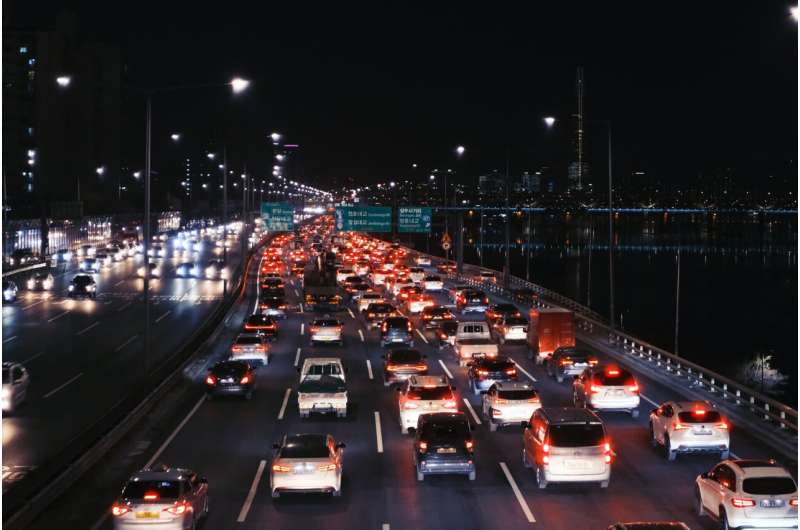
The study was carried out with contributions from the Berlin-based climate research institute MCC (Mercator Research Institute on Global Commons and Climate Change), and published in the journal Nature Sustainability.
The researchers used the NEDUM calculation model, which is well established in regional economics. They fed it with data on population densities, land use, dwelling sizes, rents, and transportation costs for each individual city. They then applied four approaches to climate policy in urban transport, namely fuel taxes, efficient cars, investments in public transport or climate-friendly urban development, implementing them both independently and simultaneously.
This resulted in two main outputs for each city and each scenario: the climate gas emissions from urban transport, and a value for the inhabitants' welfare. In addition to the material standard of living, the latter also includes a monetary value for the health impacts of traffic including noise, exhaust fumes, accidents, as well as fitness through walking or cycling.
Averaging over the 120 big cities studied, climate gas emissions fall by between 4 and 12% over the course of 15 years, depending on the urban climate policy approach pursued—and by 31% if all four approaches are pursued simultaneously. This result in this first step of the study is roughly in line with existing estimates in the research literature. The intermediate result for welfare is rather poor: minus 3% on average. But the point of the new study is that in a second step, the research team built in the constraint that inhabitants' welfare in each city increases at least marginally.
Under this condition, i.e. with a view to political feasibility, the calculation model then determined the policy package with the greatest climate protection effect for each individual city. The result was that of the maximum achievable 31% emission savings, 22% can still be realized (with an average 1% increase in welfare).
"So it appears possible to reduce emissions in a welfare-increasing way in each city while achieving most of the global emission reductions," says Felix Creutzig, head of the MCC working group Land Use, Infrastructure and Transport, and co-author of the study. "However, in view of the local specifics, a context-adequate strategy is really needed in each case; there is no one-size-fits-all solution here. This is what makes the upcoming reform of the road traffic regulations in Germany, for example, so significant. Implementation would finally allow municipalities to act flexibly when it comes to climate protection."
Charlotte Liotta, Ph.D. student at the CIRED research center in Nogent-sur-Marne near Paris and the Technical University of Berlin, is the lead author of the study and adds, "Our work provides for the first time an analytical framework for developing such context-adequate strategies. And it also highlights the importance of urban transport policies in the fight against global heating."
An estimated 8% of all global greenhouse gas emissions derive from urban transport. So far, they have hardly been considered in research on regional economics. City policies have also been largely neglected in the Nationally Determined Contributions that are being used in climate diplomacy to find a way out of the crisis.